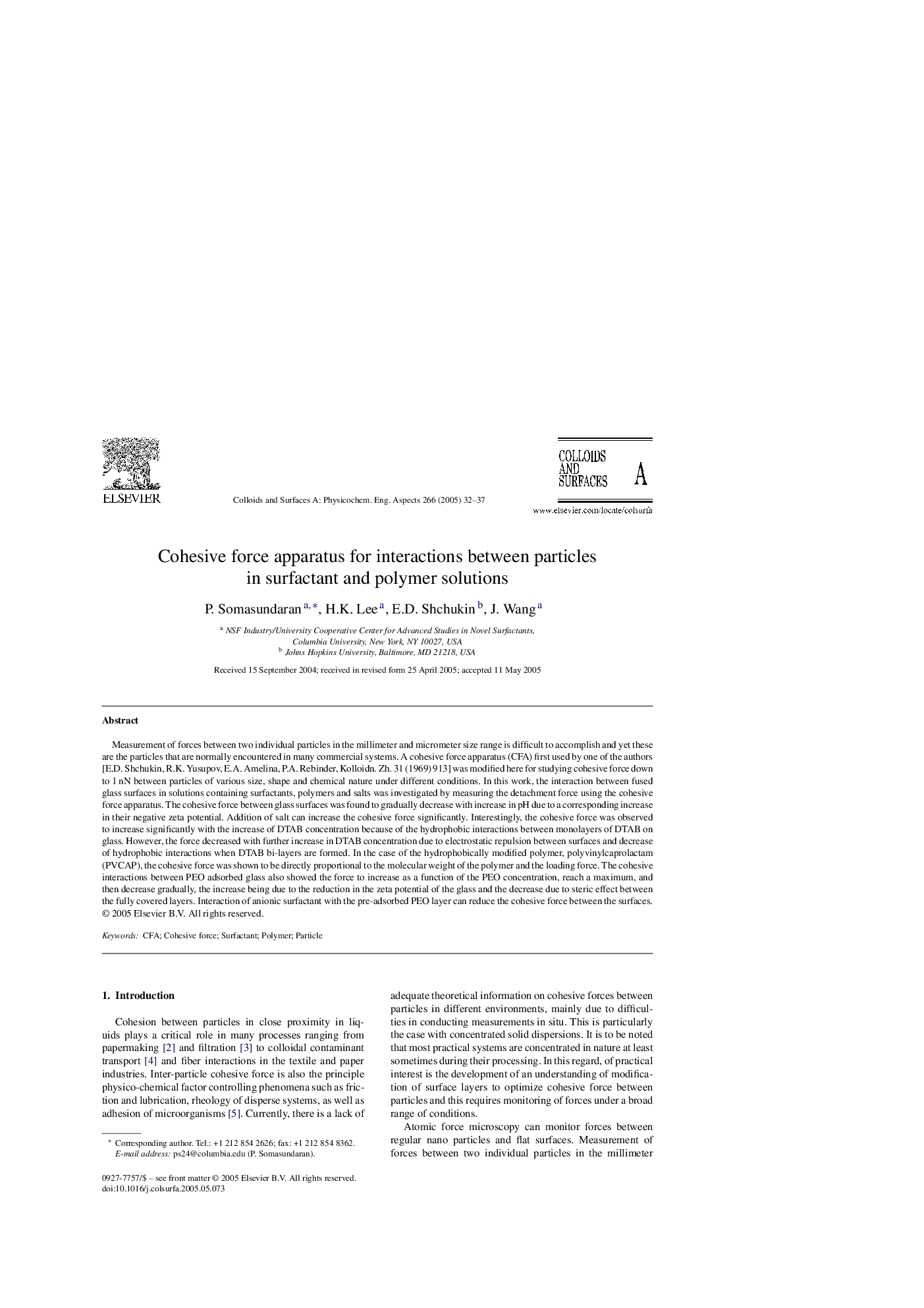| Article ID | Journal | Published Year | Pages | File Type |
|---|---|---|---|---|
| 9675647 | Colloids and Surfaces A: Physicochemical and Engineering Aspects | 2005 | 6 Pages |
Abstract
Measurement of forces between two individual particles in the millimeter and micrometer size range is difficult to accomplish and yet these are the particles that are normally encountered in many commercial systems. A cohesive force apparatus (CFA) first used by one of the authors [E.D. Shchukin, R.K. Yusupov, E.A. Amelina, P.A. Rebinder, Kolloidn. Zh. 31 (1969) 913] was modified here for studying cohesive force down to 1Â nN between particles of various size, shape and chemical nature under different conditions. In this work, the interaction between fused glass surfaces in solutions containing surfactants, polymers and salts was investigated by measuring the detachment force using the cohesive force apparatus. The cohesive force between glass surfaces was found to gradually decrease with increase in pH due to a corresponding increase in their negative zeta potential. Addition of salt can increase the cohesive force significantly. Interestingly, the cohesive force was observed to increase significantly with the increase of DTAB concentration because of the hydrophobic interactions between monolayers of DTAB on glass. However, the force decreased with further increase in DTAB concentration due to electrostatic repulsion between surfaces and decrease of hydrophobic interactions when DTAB bi-layers are formed. In the case of the hydrophobically modified polymer, polyvinylcaprolactam (PVCAP), the cohesive force was shown to be directly proportional to the molecular weight of the polymer and the loading force. The cohesive interactions between PEO adsorbed glass also showed the force to increase as a function of the PEO concentration, reach a maximum, and then decrease gradually, the increase being due to the reduction in the zeta potential of the glass and the decrease due to steric effect between the fully covered layers. Interaction of anionic surfactant with the pre-adsorbed PEO layer can reduce the cohesive force between the surfaces.
Related Topics
Physical Sciences and Engineering
Chemical Engineering
Colloid and Surface Chemistry
Authors
P. Somasundaran, H.K. Lee, E.D. Shchukin, J. Wang,
